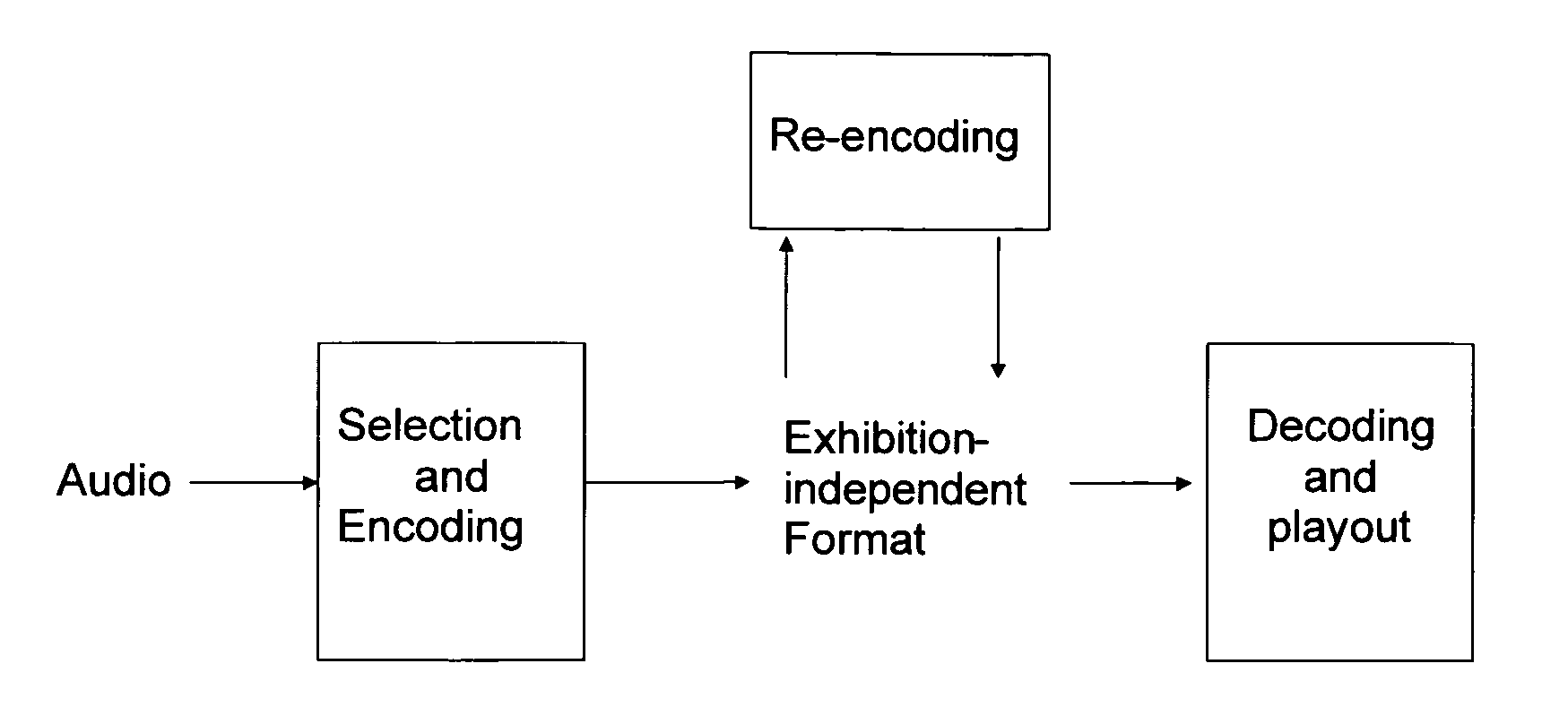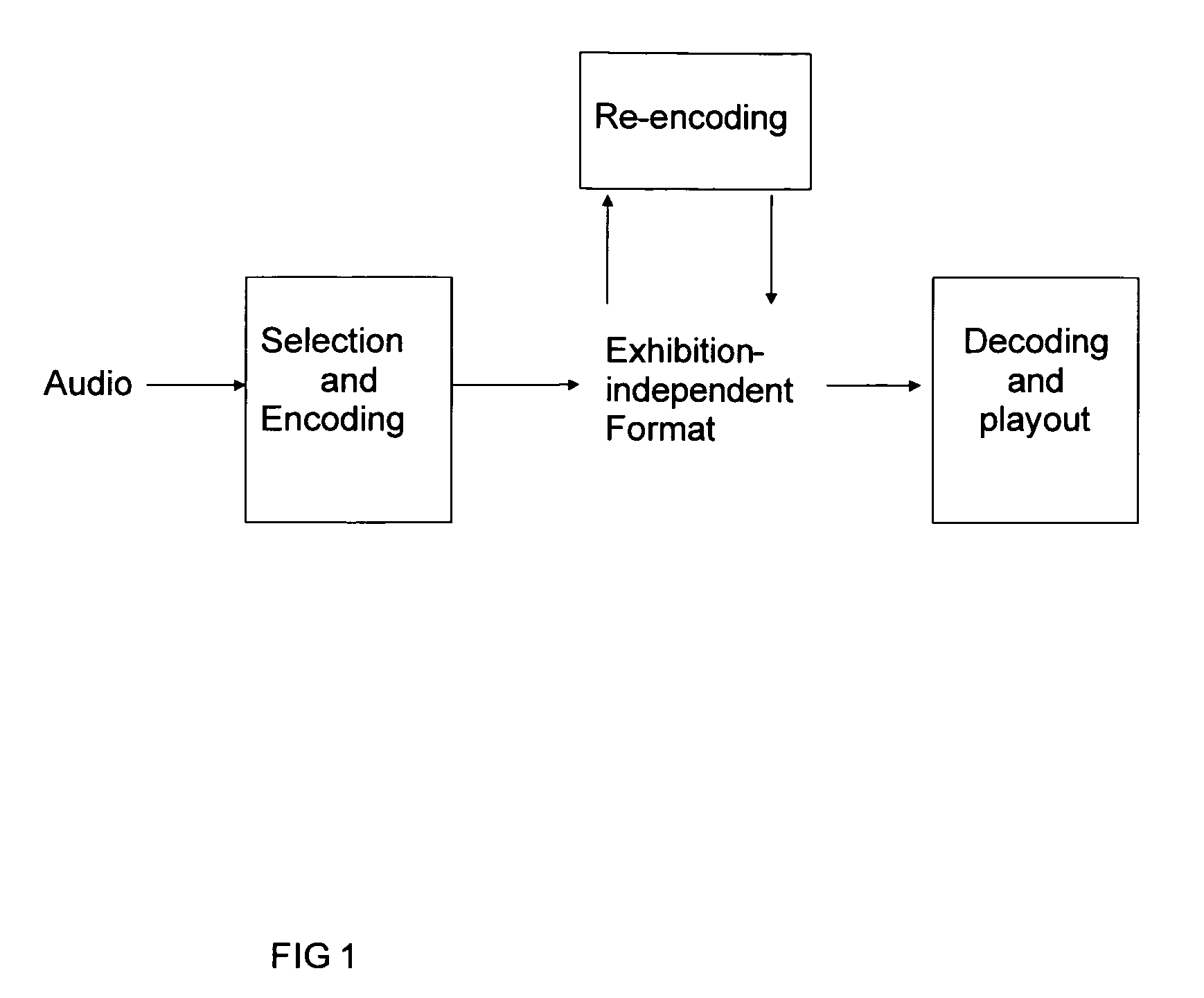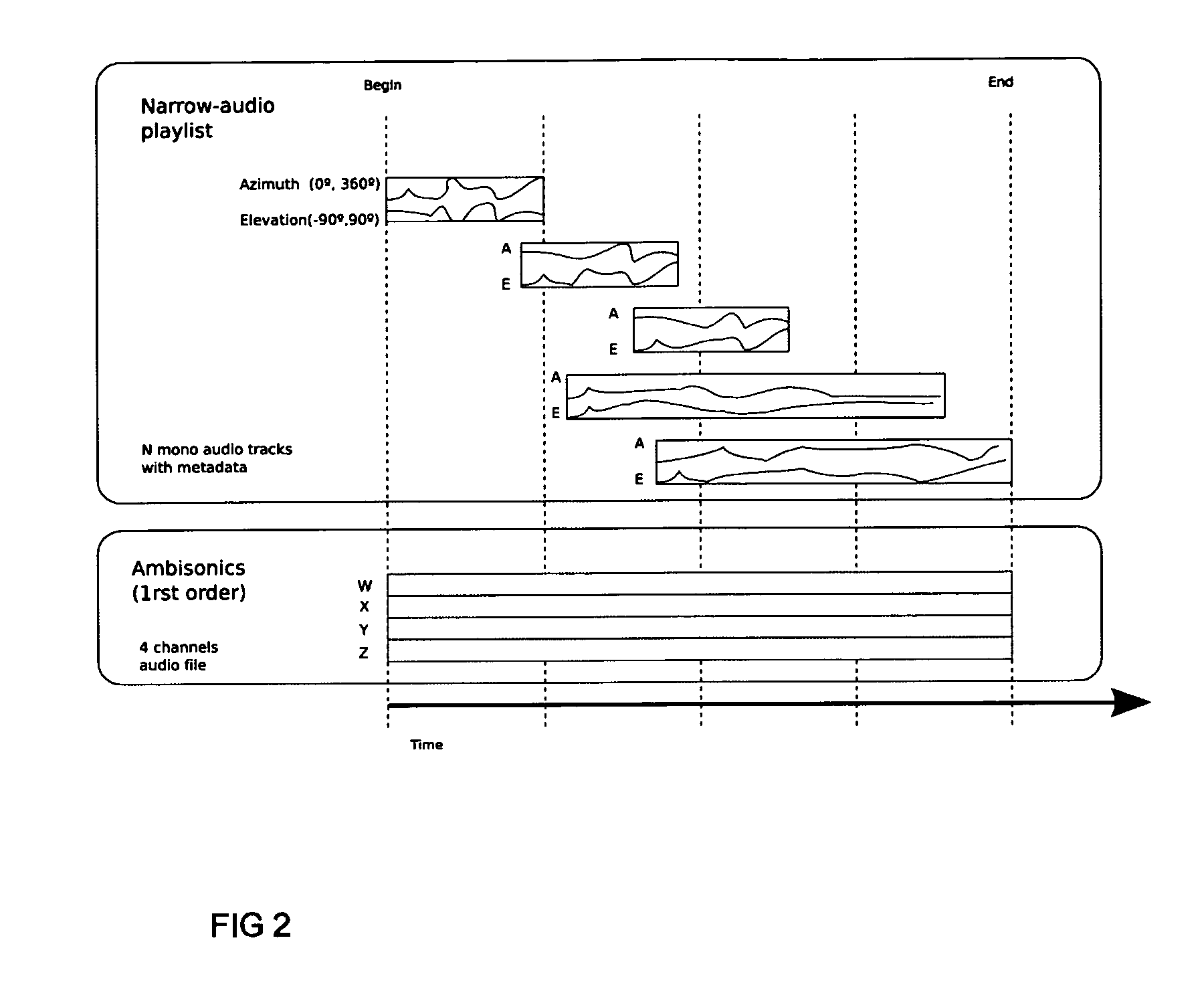Method and apparatus for three-dimensional acoustic field encoding and optimal reconstruction
a three-dimensional acoustic field and optimal reconstruction technology, applied in the field of three-dimensional acoustic field encoding and optimal reconstruction, can solve the problems of reducing reproduction quality, unable to meet the purpose of the angle outside the two loudspeakers, and the setup cannot cope with the sounds above the listener's horizontal plane, so as to reduce the sweet spot, and expand the optimal soundfield reconstruction area
- Summary
- Abstract
- Description
- Claims
- Application Information
AI Technical Summary
Benefits of technology
Problems solved by technology
Method used
Image
Examples
Embodiment Construction
[0033]FIG. 1 shows an embodiment of the method for, given a set of initial audio tracks, selecting and encoding them, and finally decoding and playing back optimally in an arbitrary exhibition setup. That is, for given loudspeakers locations, the spatial sound field will be reconstructed as well as possible, fitting the available loudspeakers, and enlarging the sweet-spot as much as possible. The initial audio can arise from any source, for example: by the use of any type of microphones of any directivity pattern or frequency response; by the use of Ambisonics microphones capable of delivering a set of Ambisonics signals of any order or mixed order; or by the use of synthetically generated audio, or effects like room reverberation.
[0034]The selection and encoding process consists of generating two groups of tracks out of the initial audio. The first group consists of those parts of the audio that require narrow localization, whereas the second group consists of the rest of the audio...
PUM
 Login to View More
Login to View More Abstract
Description
Claims
Application Information
 Login to View More
Login to View More - R&D
- Intellectual Property
- Life Sciences
- Materials
- Tech Scout
- Unparalleled Data Quality
- Higher Quality Content
- 60% Fewer Hallucinations
Browse by: Latest US Patents, China's latest patents, Technical Efficacy Thesaurus, Application Domain, Technology Topic, Popular Technical Reports.
© 2025 PatSnap. All rights reserved.Legal|Privacy policy|Modern Slavery Act Transparency Statement|Sitemap|About US| Contact US: help@patsnap.com



